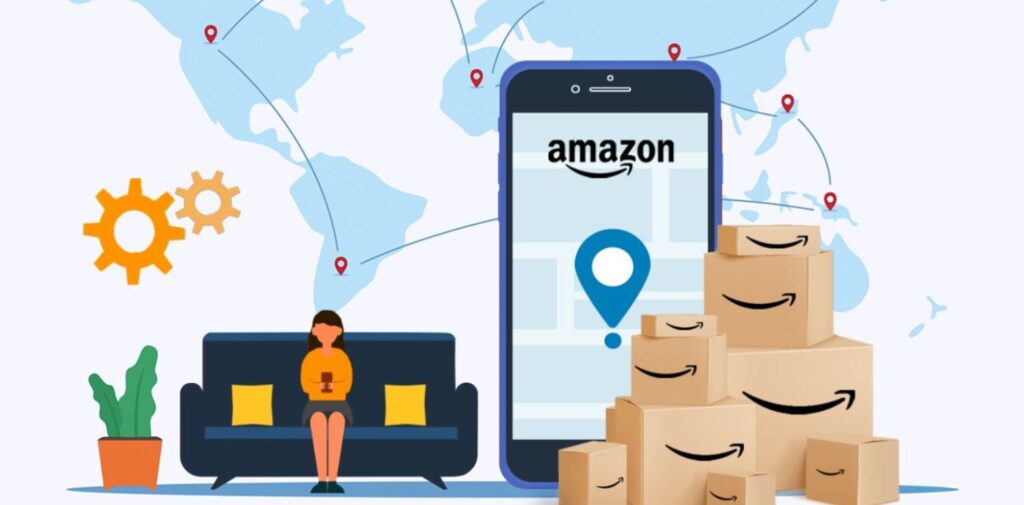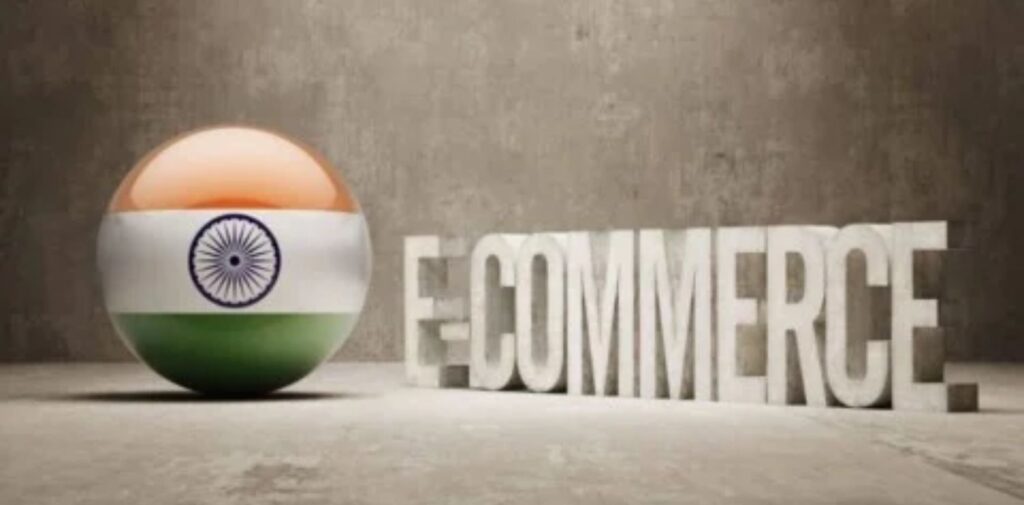In the last two decades, India has seen a massive transformation in its retail industry. The rise of e-commerce has revolutionized the way people shop, creating new opportunities for businesses, consumers, and entrepreneurs alike. From the early days of Flipkart’s rise to the dominance of global giants like Amazon, the Indian e-commerce market has grown rapidly, driven by technological advancements, increasing internet penetration, and a shift in consumer behavior. This article will explore the India Revolution in E-commerce, how Flipkart became a household name, the entrance of global players like Amazon, and the ongoing growth of the sector.
The Beginnings of E-commerce in India
E-commerce in India started gaining traction in the early 2000s. At that time, online shopping was still a novelty, with only a handful of platforms offering products like books, electronics, and gadgets. The idea of shopping online was relatively new to the Indian consumer, many of whom preferred traditional retail shopping due to trust issues, payment concerns, and lack of internet access.
The real turning point for Indian e-commerce came with the launch of Flipkart in 2007. Founded by Sachin Bansal and Binny Bansal, both former Amazon employees, Flipkart started as an online bookstore and quickly expanded its offerings to include electronics, apparel, and household products. The company’s early success was driven by its focus on customer service, user-friendly website design, and the promise of delivering products in a timely manner.
Flipkart’s growth also coincided with the increasing availability of affordable internet access, especially in urban and semi-urban areas. As more Indians gained access to the internet through smartphones, e-commerce began to take off. Flipkart’s rise helped shape the future of online shopping in India and served as an inspiration for many entrepreneurs looking to enter the e-commerce space.

The Rise of Flipkart: India’s Homegrown Giant
Flipkart’s early success can be attributed to several factors. First, the company focused on understanding the unique needs of Indian consumers, which was a key differentiator from global e-commerce players. Flipkart recognized the importance of offering cash-on-delivery (COD) as a payment option, as many Indians were wary of making online payments due to security concerns. This simple yet effective strategy helped Flipkart build trust with consumers and expand its customer base.
Moreover, Flipkart was one of the first companies to introduce a return policy and free shipping, which further solidified its position in the Indian market. The company also made strategic partnerships with major brands and sellers to offer a wide variety of products, ranging from electronics to fashion to home appliances.
The launch of the annual “Big Billion Day” sale in 2014 was another milestone for Flipkart, as it helped the company achieve record sales in a short period of time. These types of promotional events became a staple of e-commerce in India, further driving consumer interest in online shopping.
Flipkart’s early success laid the foundation for the larger e-commerce boom in India, which was soon to be followed by other homegrown platforms and global players.

The Entry of Amazon: A Global Powerhouse in India
While Flipkart was making waves in India, global e-commerce giant Amazon was eyeing the Indian market. Amazon, founded by Jeff Bezos in the United States, entered India in 2013 with a promise to bring a world-class online shopping experience to Indian consumers. Amazon’s entry posed a direct challenge to Flipkart, which was already dominant in the market.
Amazon’s strategy for India was different from that of Flipkart. The company focused heavily on its technology-driven approach and vast global supply chain to provide consumers with a wide range of products and services. Amazon’s introduction of Amazon Prime, which offered benefits like fast delivery, exclusive content, and early access to deals, quickly gained popularity among Indian consumers, particularly in metro cities.
To further expand its reach, Amazon invested heavily in building a strong logistics network across the country. This included setting up fulfillment centers in various cities, improving last-mile delivery, and partnering with local courier companies to ensure that products reached even remote areas. As a result, Amazon was able to offer faster delivery and better customer service, which helped the company build a loyal customer base in India.
In addition to its focus on consumer experience, Amazon also introduced a marketplace model, which allowed third-party sellers to list their products on the platform. This move helped Amazon offer a wide variety of products without having to directly manage the inventory, making it an attractive option for small and medium-sized businesses.
The Growth of E-commerce Beyond Flipkart and Amazon
While Flipkart and Amazon are the two dominant players in the Indian e-commerce space, they are not alone. A number of other e-commerce platforms have emerged in recent years, each catering to specific market segments or niches.
Snapdeal, once considered a major competitor to Flipkart, initially focused on offering discounted products and daily deals. However, in recent years, Snapdeal has pivoted to focus more on value-conscious consumers, offering a wide range of affordable products in categories like fashion, electronics, and home goods.
Another platform that has gained significant attention is Myntra, which specializes in fashion and lifestyle products. Myntra, acquired by Flipkart in 2014, has become one of the leading online fashion destinations in India. The platform offers a wide variety of clothing, footwear, and accessories from both international and Indian brands.
Additionally, e-commerce platforms like BigBasket and Grofers have gained popularity in the online grocery space. These companies focus on providing consumers with the convenience of ordering groceries online and having them delivered to their doorsteps, a service that has become increasingly important during the COVID-19 pandemic.
The rise of these specialized e-commerce platforms shows how the Indian market has evolved beyond general retail shopping. With the growth of internet access in rural and semi-urban areas, there is a rising demand for niche products and services, which has created new opportunities for e-commerce companies to cater to specific customer needs.

Challenges and the Future of E-commerce in India
While the growth of e-commerce in India has been impressive, the industry still faces several challenges. One of the biggest obstacles is the issue of logistics, particularly in rural areas where infrastructure can be lacking. Although companies like Amazon and Flipkart have invested heavily in improving delivery networks, last-mile delivery remains a challenge, especially during peak seasons or in remote regions.
Another challenge is the regulatory environment. India’s e-commerce industry has seen several changes in government policies, particularly regarding foreign direct investment (FDI) in retail. The government’s stance on these regulations can have a significant impact on how international players like Amazon and Flipkart operate in the country. Additionally, there are concerns over data privacy and the protection of consumer rights in the online space, which may require more stringent laws to ensure the safety and security of online transactions.
Despite these challenges, the future of e-commerce in India looks promising. India’s young, tech-savvy population, coupled with the continued expansion of internet access in rural areas, offers significant growth potential for the e-commerce sector. Moreover, the ongoing adoption of smartphones and the increasing penetration of digital payment systems will further boost online shopping in the coming years.
As companies continue to innovate and improve their services, India’s e-commerce market is expected to become one of the largest in the world. Whether through advancements in artificial intelligence, augmented reality, or drone delivery, the future of e-commerce in India is filled with exciting possibilities.
Conclusion: India Revolution in E-commerce
India’s e-commerce revolution has transformed the retail landscape, bringing convenience, choice, and competitive pricing to consumers. From Flipkart’s early days to Amazon’s growth in India, the sector has seen significant development, driven by technological advancements and changing consumer preferences. While challenges remain, the e-commerce industry in India continues to grow at an impressive rate and is poised to become a key player in the global retail market. With increasing internet penetration, a younger population, and a growing digital economy, the future of e-commerce in India looks incredibly bright.




